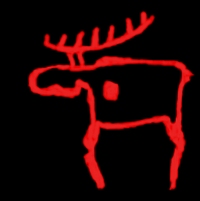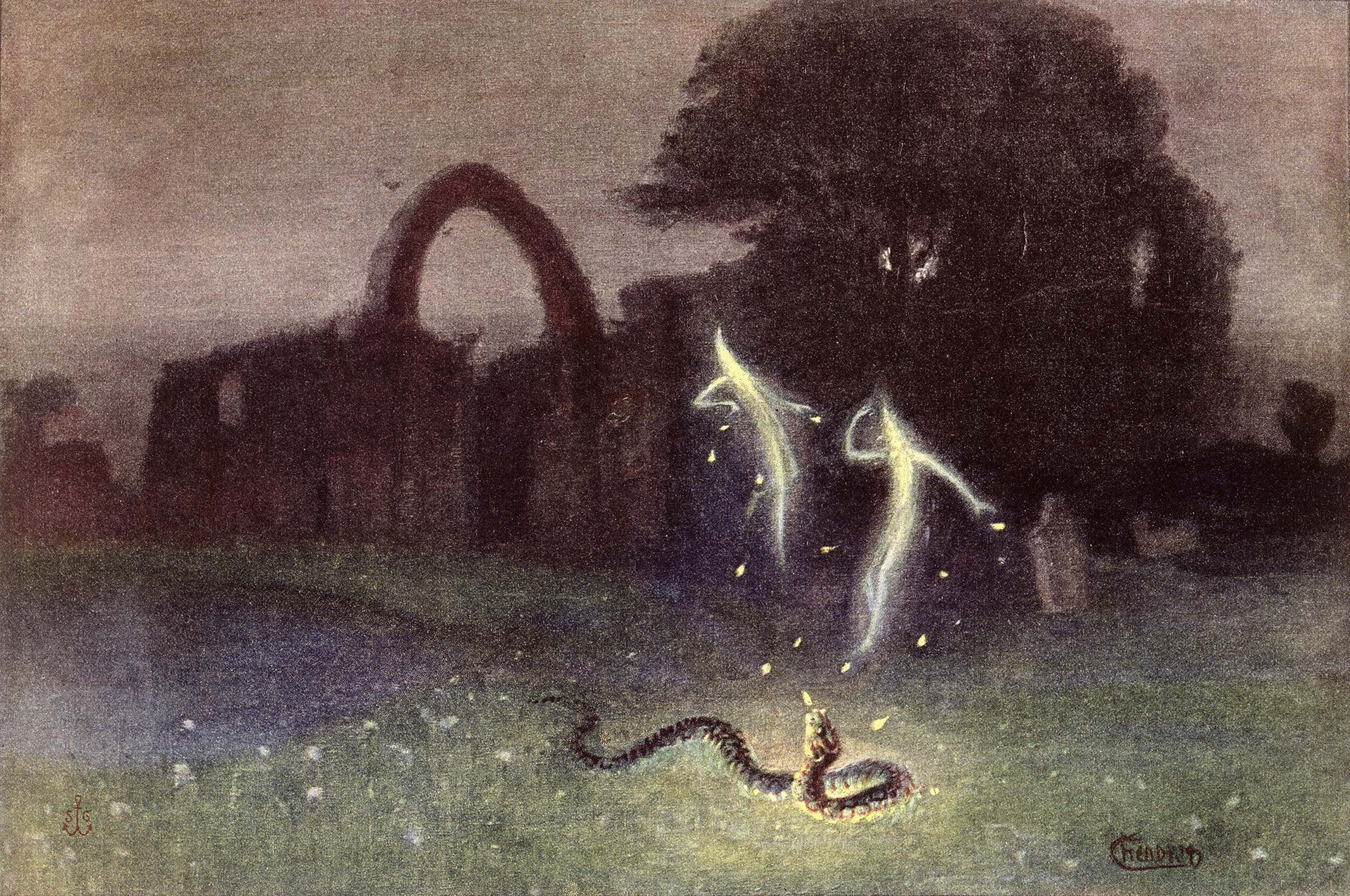|
PaasselkÃĊ Devils
PaasselkÃĊ devils () are light phenomena sometimes appearing at Lake PaasselkÃĊ, Finland and swampy and forested areas nearby the lake. PaasselkÃĊ is a lake formed in an impact crater. There is a magnetic anomaly in the centre of the lake. The PaasselkÃĊ Devil is usually said to be a ball of light visible in the air above PaasselkÃĊ or areas nearby. It is said to move at varying speeds on some occasions and to remain stationary at others. Sometimes there are several balls. The "ball of fire" has been said by some locals to act as if it were conscious. It can follow fishermen's boats or escape the light of torch. Sometimes the light moves at incredible speeds. The light has been visible for a long time; it is a part of local folklore and was given the name "devil". Locals in earlier times may have believed that the ball of light was actually an evil creature. In earlier times local people were used to seeing these lights and did not consider them to be something extraordinary. Th ... [...More Info...] [...Related Items...] OR: [Wikipedia] [Google] [Baidu] |
PaasselkÃĊ
PaasselkÃĊ (earlier ''Paasivesi'', both names roughly mean 'Stone lake') is an oval-shaped lake formed in an eroded impact crater in Southern Savonia, Finland. The lake, which is a part of Orivesi, which is in turn part of the Greater Saimaa, is devoid of islands which makes it different from other lakes in the region. PaasselkÃĊ is also unusually deep, 75 m at the deepest point. The PaasselkÃĊ impact occurred roughly <1800 million years ago ( period of the ) and affected crystalline rocks and some overlying sandstones of the |
Finland
Finland, officially the Republic of Finland, is a Nordic country in Northern Europe. It borders Sweden to the northwest, Norway to the north, and Russia to the east, with the Gulf of Bothnia to the west and the Gulf of Finland to the south, opposite Estonia. Finland has a population of 5.6 million. Its capital and largest city is Helsinki. The majority of the population are Finns, ethnic Finns. The official languages are Finnish language, Finnish and Swedish language, Swedish; 84.1 percent of the population speak the first as their mother tongue and 5.1 percent the latter. Finland's climate varies from humid continental climate, humid continental in the south to boreal climate, boreal in the north. The land cover is predominantly boreal forest biome, with List of lakes of Finland, more than 180,000 recorded lakes. Finland was first settled around 9000 BC after the Last Glacial Period, last Ice Age. During the Stone Age, various cultures emerged, distinguished by differen ... [...More Info...] [...Related Items...] OR: [Wikipedia] [Google] [Baidu] |
Impact Crater
An impact crater is a depression (geology), depression in the surface of a solid astronomical body formed by the hypervelocity impact event, impact of a smaller object. In contrast to volcanic craters, which result from explosion or internal collapse, impact craters typically have raised rims and floors that are lower in elevation than the surrounding terrain. Impact craters are typically circular, though they can be elliptical in shape or even irregular due to events such as landslides. Impact craters range in size from microscopic craters seen on lunar rocks returned by the Apollo Program to simple bowl-shaped depressions and vast, complex, multi-ringed impact basins. Meteor Crater is a well-known example of a small impact crater on Earth. Impact craters are the dominant geographic features on many solid Solar System objects including the Moon, Mercury (planet), Mercury, Callisto (moon), Callisto, Ganymede (moon), Ganymede, and most small moons and asteroids. On other planet ... [...More Info...] [...Related Items...] OR: [Wikipedia] [Google] [Baidu] |
Magnetic Anomaly
In geophysics, a magnetic anomaly is a local variation in the Earth's magnetic field resulting from variations in the chemistry or magnetism of the rocks. Mapping of variation over an area is valuable in detecting structures obscured by overlying material. The magnetic variation (geomagnetic reversals) in successive bands of ocean floor parallel with mid-ocean ridges was important evidence for seafloor spreading, a concept central to the theory of plate tectonics. Measurement Magnetic anomalies are generally a small fraction of the magnetic field. The total field ranges from 25,000 to 65,000 nanoteslas (nT). To measure anomalies, magnetometers need a sensitivity of 10 nT or less. There are three main types of magnetometer used to measure magnetic anomalies: # The fluxgate magnetometer was developed during World War II to detect submarines. It measures the component along a particular axis of the sensor, so it needs to be oriented. On land, it is often oriented vertically, wh ... [...More Info...] [...Related Items...] OR: [Wikipedia] [Google] [Baidu] |
Finnish Mythology
Finnish mythology commonly refers of the folklore of Finnish paganism, of which a Finnish Neopaganism, modern revival is practiced by a small percentage of the Finnish people. It has many shared features with Estonian mythology, Estonian and other Baltic Finns, Finnic mythologies, but also with neighbouring Baltic mythology, Baltic, slavic mythology, Slavic and, to a lesser extent, Norse mythology, Norse mythologies. Finnish mythology survived within an oral tradition of mythical poem-singing and folklore well into the 19th century. Of the animals, the most sacred was the bear, whose real name was never uttered out loud, which was thought to be unfavorable to the hunt. The bear ("karhu" in Finnish) was seen as the embodiment of the forefathers, and for this reason it was called by many circumlocutions: ''mesikÃĊmmen'' ("mead-paw"), ''otso'' ("browed one"), ''kontio'' ("dweller of the land"), ''metsÃĊn kultaomena'' ("the golden apple of the forest"). It was not strictly seen as a ... [...More Info...] [...Related Items...] OR: [Wikipedia] [Google] [Baidu] |
Sulo Strömberg
Sulo may refer to: People * Sulo (singer) (born 1969), Swedish vocalist and songwriter * Sulo Aittoniemi (1936â2016), Finnish politician * Sulo BÃĊrlund (1910â1986), Finnish shot putter * Sulo Cederström (1903â1944), Finnish sports shooter * Sulo Heino (1908â1996), Finnish athlete * Sulo JÃĊÃĊskelÃĊinen (1890â1942), Finnish skier * Sulo Ketola (born 2007), Finnish footballer * Sulo LeppÃĊnen (1916â2015), Finnish wrestler * Sulo Nurmela (1908â1999), Finnish cross-country skier * Sulo Parkkinen (1930â2013), Finnish football player * Sulo Salmi (1914â1984), Finnish gymnast * Sulo Salo (1909â1995), Finnish football player * Sulo Suorttanen (1921â2005), Finnish politician * Sulo Teittinen (1882â1964), Finnish politician * Sulo Vaattovaara (born 1967), Swedish football player Other * , a German/French environmental technology company, formerly Plastic Omnium Environment, a division of OPmobility OPmobility is a French automotive supplier. OPmobilit ... [...More Info...] [...Related Items...] OR: [Wikipedia] [Google] [Baidu] |
Will-o'-the-wisp
In folklore, a will-o'-the-wisp, will-o'-wisp, or ; ), is an atmospheric ghost light seen by travellers at night, especially over bogs, swamps or marshes. The phenomenon is known in the United Kingdom by a variety of names, including jack-o'-lantern, friar's lantern, and hinkypunk, and is said to mislead and/or guide travellers by resembling a flickering lamp or lantern. Equivalents of the will-o'-the-wisps appear in European folklore by various names, e.g., in Latin, in French, or in Germany. Equivalents occur in traditions of cultures worldwide (cf. ); e.g., the Naga fireballs on the Mekong in Thailand. In North America the phenomenon is known as the Paulding Light in Upper Peninsula of Michigan, the Spooklight in Southwestern Missouri and Northeastern Oklahoma, and St. Louis Light in Saskatchewan. In Arab folklore it is known as . In folklore, will-o'-the-wisps are typically attributed as ghosts, fairies or elemental spirits meant to reveal a path or direction. Thes ... [...More Info...] [...Related Items...] OR: [Wikipedia] [Google] [Baidu] |
Atmospheric Ghost Lights
Atmospheric ghost lights are lights (or fires) that appear in the atmosphere without an obvious cause. Examples include the onibi, hitodama and will-o'-wisp. They are often seen in humid climates.#è§çḞ1979, Tsunoda 1979, pages 11-53 According to legend, some lights are wandering spirits of the dead, the work of devils or yokai, yÅkai, or the pranks of fairy, fairies. They are feared by some people as a portent of death. In other parts of the world, there are folk beliefs that supernatural fires appear where treasure is buried; these fires are said to be the spirits of the treasure or the spirits of humans buried with grave goods. Atmospheric ghost lights are also sometimes thought to be related to UFOs.Kanda 1992, pages 275-278. Some ghost lights such as St. Elmo's fire or the shiranui have been explained as optical phenomena of light emitted through electrical activity. Other types may be due to combustion of flammable gases, ball lightning, meteors, torches and other human-mad ... [...More Info...] [...Related Items...] OR: [Wikipedia] [Google] [Baidu] |
Finnish Legendary Creatures
Finnish may refer to: * Something or someone from, or related to Finland * Culture of Finland * Finnish people or Finns, the primary ethnic group in Finland * Finnish language, the national language of the Finnish people * Finnish cuisine See also * Finish (other) * Finland (other) * Suomi (other) * {{disambiguation Language and nationality disambiguation pages ... [...More Info...] [...Related Items...] OR: [Wikipedia] [Google] [Baidu] |



